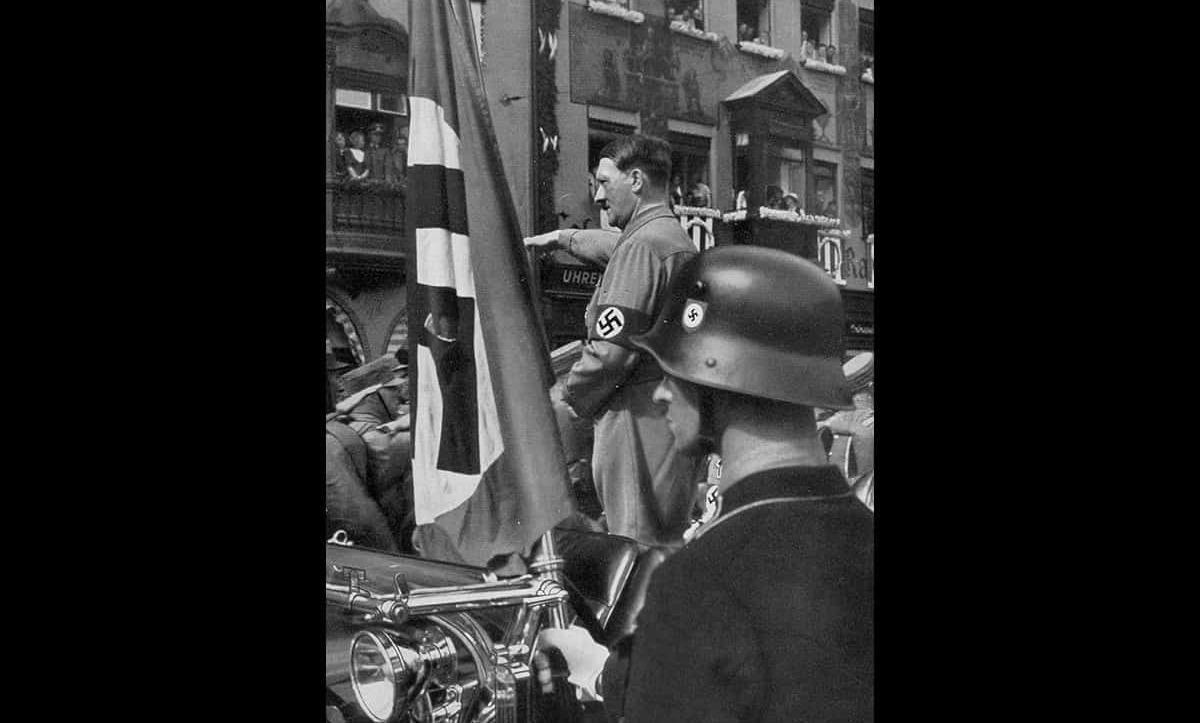The Nazis’ rise to power, and the role of Adolf Hitler himself, is one of the primary causes of the Holocaust. The Nazis initiated, organised and directed the genocide and their racist ideology underpinned it.
The Nazi rise to power
The Nazis’ ideology rested on several key ideas, such as nationalism, racial superiority, antisemitism, and anticommunism. These ideas were popular in Germany in the 1920s and early 1930s, as the economic and political situation fluctuated and then, following the Wall Street Crash in 1929, quickly deteriorated.
In these uncertain times, the Nazi Party appeared to offer hope, political stability and prosperity. In 1932, the Nazis became the biggest party in the
Reichstag
, with 37.3% of the vote.
Shortly afterwards, on 30 January 1933, Hitler was appointed Chancellor. The Nazis quickly consolidated their power, taking advantage of the Reichstag Fire of February 1933 to begin their reign of terror. Whilst primarily aimed at political enemies, the infrastructure of camps and institutionalised torture used in these initial months provided the groundwork for the camp system which later facilitated mass murder. Although not the subject of mass arrests in the same way that many political prisoners were initially, Jews were quickly targeted by the Nazi regime.
The Nazis’ persecution of Jews started with exclusionary policies, eliminating Jews from certain professions and educational opportunities and encouraging them to emigrate. As their power became more secure, the Nazis quickly escalated to more direct persecution, such as the Nuremberg Laws of 1935 which stripped Jews of their citizenship and Kristallnacht (an antisemitic
pogrom
) in 1938. This escalation of oppression continued to intensify and radicalise until the outbreak of war, where it quickly became more lethal, and, eventually, genocidal.
The role of Adolf Hitler
As leader of the Nazi Party, Adolf Hitler played a key role in the ideas behind, the events leading up to, and the unfolding of, the Holocaust.
Prior to their election, the Nazis shaped their propaganda to present Hitler as a strong leader that could return Germany from the uncertain circumstances of the time to its former glory. In the early years, Hitler was the driving force behind the Nazis, and made key changes to the party’s structure, branding and methods to turn it into a credible political force.
Once elected, Hitler rarely took part in direct actions against Jews or other internal enemies, instead directing his security forces, the
SS
,
SA
and
SD
, and their leader, Heinrich Himmler, to carry out this work. Whilst not physically involved, Hitler was involved in all major policy decisions, including persecutory policies and events. This is evidenced by his personal approval for the secret euthanasia programme of the disabled,
T-4
, in Autumn 1939.
Hitler’s fanatic
antisemitism
,
nationalism
and
anticommunism
propelled Nazi ideology, and later, the Holocaust. Hitler’s expansionist policies, such as
Lebensraum
pushed Europe into the Second World War. This, alongside other factors, had severe ramifications for European Jews.







![Robert Ritter (1901-1951) was a German ‘racial scientist’ in the Nazi regime. Ritter’s research into the eugenics of Roma led to his appointment as head of the Racial Hygiene and Demographic Biology Research Unit. Ritter’s work to classify Roma aided and justified the Nazis discrimination, persecution, and execution of Roma. Here, Ritter [right] is pictured doing research in 1936](https://dsvfmvr182ibt.cloudfront.net/prod/uploads/2019/11/Bundesarchiv_R_165_Bild-244-71_Dr._Robert_Ritter_mit_alter_Frau_und_Polizist_1200x723_acf_cropped.jpg)















